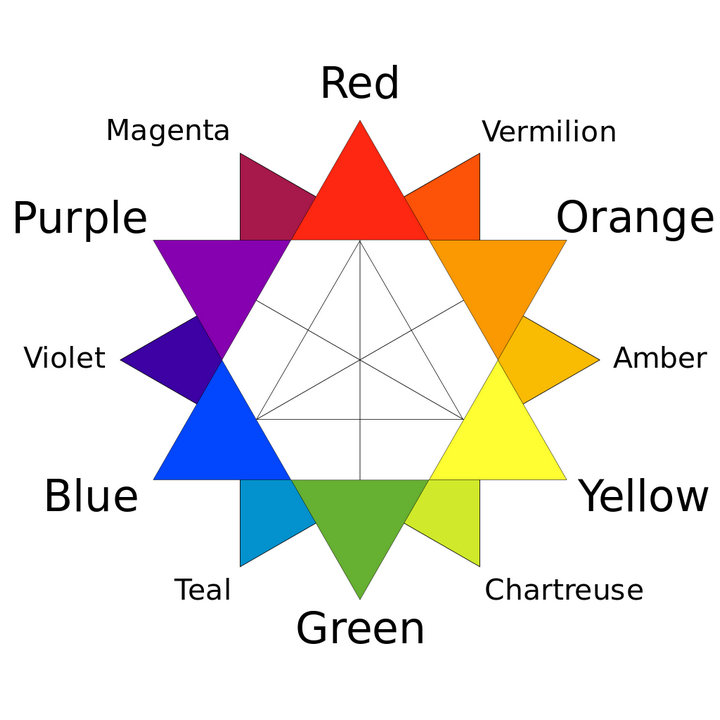The distinction between “warm” and “cool” colors has been important since at least the late 18th century. The contrast, as traced by etymologies in the Oxford English Dictionary, seems related to the observed contrast in landscape light, between the “warm” colors associated with daylight or sunset, and the “cool” colors associated with a gray or overcast day. Warm colors are often said to be hues from red through yellow, browns and tans included; cool colors are often said to be the hues from blue green through blue violet, most grays included. There is historical disagreement about the colors that anchor the polarity, but 19th-century sources put the peak contrast between red orange and greenish blue.
Color theory has described perceptual and psychological effects to this contrast. Warm colors are said to advance or appear more active in a painting, while cool colors tend to recede; used in interior design or fashion, warm colors are said to arouse or stimulate the viewer, while cool colors calm and relax. Most of these effects, to the extent they are real, can be attributed to the higher saturation and lighter value of warm pigments in contrast to cool pigments. Thus, brown is a dark, unsaturated warm color that few people think of as visually active or psychologically arousing.
Contrast the traditional warm–cool association of color with the color temperature of a theoretical radiating black body, where the association of color with temperature is reversed. For instance, the hottest stars radiate blue light (i.e., with shorter wavelength and higher frequency), and the coolest radiate red.
The hottest radiating bodies (e.g. stars) have a “cool” color, while the less hot bodies radiate with a “warm” color.
This contrast is further seen in the psychological associations of colors with the Relativistic Doppler effect seen in astronomical objects. Traditional psychological associations, where warm colors are associated with advancing objects and cool colors with receding objects, are directly opposite those seen in astrophysics, where stars or galaxies moving towards our viewpoint from Earth are blueshifted (advancing) and stars or galaxies moving away from Earth are redshifted (receding).
Source From Wikipedia
